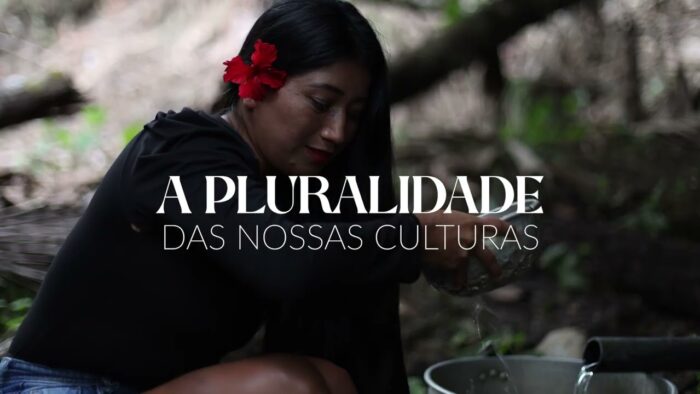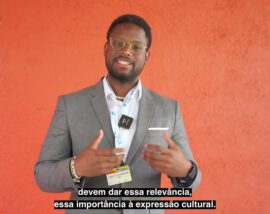Organization: UN Human Settlements Program
Country: Spain
Closing date: 09 Apr 2017
i. Project:
Making Cities Sustainable and Resilient
ii. Duty station of assignment
Barcelona (Spain)
iii. Functional Title:
Urban Ecology Specialist
iv. Contract type:
Individual Contract (Consultancy Assignment)
v. Duration:
Three (3) months
vi. Closing date for applications:
9 April 2017
BACKGROUND
Fast growing cities and urban areas of the world are engines of growth and wealth accumulation. This growth can have positive social, cultural and educational impacts. On the other hand, evidence demonstrates that fast economic growth, combined with rapid sprawling population expansion in urban areas, also increases disaster vulnerability and exposure. The level of urbanization is far higher in the developed world; however, the annual ‘urbanization rate’ is much faster in the developing world. The primary urban agglomerations with the highest concentrations of people and economic activity mostly overlap with the areas of extreme or high risk related to disasters such as coastal areas, along rivers and in flood plains.
This joint initiative with UNISDR, UN-Habitat and the European Commission aims at improving understanding of, and capacity to, address disaster risk at the local level in crisis-prone cities. UN-Habitat will focus on supporting local capacities from crisis-prone cities, and humanitarian partners, in measuring their resilience status and have an action plan in order to build resilience.
The action builds on the achievements of the Hyogo Framework for Action – Building the Resilience of Nations 2005-2015, and paves the way toward the implementation of the Sendai Framework for DRR 2015-2030 at the local level and the New Urban Agenda adopted at Habitat III in Quito, Ecuador October 2016. The Action will also contribute to the European Commission’s Action Plan for Resilience in Crisis Prone Countries 2013-2020 and The EU Approach to Resilience: Learning from Food Security Crises.
The project will work with local government institutions, to plan, coordinate, implement and support the various outlined activities. The primary and most direct beneficiaries will be local stakeholders, city authorities and civil society. Women, children and other at risk groups, often disproportionately affected by crises situations, will be engaged and receive additional attention.
MAIN OBJECTIVE
The overall objective of this project is to build more inclusive, sustainable, and resilient cities, by strengthening the capacity of key public, private and civil society stakeholders to measure, make decisions, plan and develop actions for building resilience to ensure that public and private investments are risk-informed and that early interventions in crisis-prone cities are linked to longer-term development goals in line with the actions of the New Urban Agenda. This joint initiative aims at improving local government and stakeholder understanding of, and capacity for, developing and implementing resilience action plans.
The expected results are:
-
Increased commitments to build local-level resilience.
-
Local Resilience and investments measured.
-
Key issues and challenges identified in linking early interventions in crisis-prone cities to long-term sustainable development inputs.
-
Capacity is built in cities and local governments to develop and implement integrated local climate and disaster resilience action plans.
-
Crisis-prone cities have enhanced capacity to develop and implement plans to increase their resiliency.
UN-Habitat will work in coordination with the Commission and EU Delegations in each city to ensure consistency with the EC programming documents and complementarily between thematic and geographic actions; this will also ensure complementarities of activities funded by other programmes and initiatives undertaken by other partners operating at the local level and globally.
MAIN RESPONSIBILITIES
Under the direct supervision of the Chief Technical Advisor of the Programme, the candidate will provide substantive professional support to the Programme and will undertake the following tasks:
• Support the creation, development and calibration of diagnostic tools – including the City Resilience Profiling Tool (CRPT) and Resilience Action Plan (RAP).
• Examine the environment element within the CRPT to ensure biodiversity inclusion and protection are being represented fully in the urban system analysis.
• Determine how environmental aspects can be harnessed to support the urban system and its capacity to move towards low-carbon, sustainable urban development.
• Assess the possibility to include climate adaptive strategies and mitigation measures at the urban level, in recognition of the important role played by urban areas in addressing climate change.
• Analyse the inter-connected relationships of the built environment, environment, social, basic infrastructure and transport elements of the CRPT to provide holistic comprehensive assessments.
• Develop the environment element of the CRPT to ensure that urban ecosystems with nature-based solutions to strengthen resilience within the urban system have been fully considered in the analysis. Special account should be taken of strategies to go beyond the current limitation of green planning in cities (ecological corridors, urban vegetation, protected areas, etc..) to allow an inter-connected, cohesive, urban biodiversity to grow.
• Explore larger concepts of ecosystem services and planetary boundaries in relation to urban resilience.
• Support the CRPP Team in facilitating communications with the programme pilot cities and partner organisation to inform the development of the CRPT.
• Assist in development of built environment and environment indicators, results and action plans for cities.
• Advise on data collection processes for environmentally sustainable and ecologically resilient cities.
• Report on progress, problems and proposed solutions; contributes to the production of global reports, information and communication tools in the areas of intervention.
• Assist in the production of guidelines, focusing on built environment and environment capacity and resilience, to be used by the programme and partner organisations.
• Undertake any other tasks for the Programme, which are in line with the experience of the consultant.
DUTY STATION
The work shall be performed from the CRPP Barcelona office.
PROGRESS CONTROLS AND PAYMENT INSTALLMENTS
Payment will be done in installments on a monthly basis upon completion and acceptance of monthly progress report. A time sheet must be submitted by the individual contractor, duly approved by the Chief Technical Advisor, which shall serve as the basis for the payment of fees. Final payment amount will be based on actual man-days worked for that month.
TRAVEL
If UN-Habitat determines that the individual contractor needs to travel outside the UN-Habitat CRPP Barcelona office in order to perform his/her assignment, that travel is provided by the organisation. When travel is authorized for the individual contractor, economy class shall be the standard of accommodation for air travel in all cases and irrespective of the duration of the journey.
COMPETENCIES
*Professional: *Knowledge and understanding of theories, concepts and approaches relevant to donor relations, public-private partnerships and private sector fundraising. Ability to identify issues, analyze and participate in the resolution of issues/problems. Ability to conduct data collection using various methods. Conceptual, analytical and evaluative skills to conduct independent research and the use of a variety of research sources. Ability to organize seminars, consultations, training workshops and special events. Ability to apply judgment in the context of assignments given, plan own work and manage conflicting priorities. Shows pride in work and in achievements. Demonstrates professional competence and mastery of subject matter. Is conscientious and efficient in meeting commitments, observing deadlines and achieving results. Communication*: Speaks and writes clearly and effectively. Listens to others, correctly interprets messages from others and responds appropriately. Asks questions to clarify, and exhibits interest in having two-way communication. Tailors language, tone, style and format to match the audience. Demonstrates openness in sharing information and keeping people informed. Planning and Organizing: Develops clear goals that are consistent with agreed strategies. Identifies priority activities and assignments; adjusts priorities as required. Allocates appropriate amount of time and resources for completing work. Foresees risks and allows for contingencies when planning. Monitors and adjusts plans and actions as necessary. Uses time efficiently. *Client Orientation:** Considers all those to whom services are provided to be “clients ” and seeks to see things from clients’ point of view. Establishes and maintains productive partnerships with clients by gaining their trust and respect. Identifies clients’ needs and matches them to appropriate solutions. Monitors ongoing developments inside and outside the clients’ environment to keep informed and anticipate problems. Keeps clients informed of progress or setbacks in projects. Meets timeline for delivery of products or services to client.
EDUCATION
• Master’s Degree in Ecology, Urban Ecology, Environmental Science, or similar fields deemed relevant to the subject areas covered by the CRPP Terms of Reference.
• A first-level university degree in combination with qualifying experience may be accepted in lieu of the advanced university degree.
WORK EXPERIENCE
A minimum of 5 years work experience including:
• Demonstrated experience in urban environment, good governance and liaising with governmental authorities, other national/international institutions and NGOs.
• Demonstrated experience working in the fields of environment, climate change, disaster risk reduction, and recovery.
• Demonstrated experience in the development of guidelines, toolkits or policies in relation to urban environment, protected areas or ecologic corridors.
• Knowledge of the urban environment in fragile cities, nature-based approach, and monitoring and evaluation techniques.
• Ability to work with minimal supervision and with good sense of initiative to keep the supervisor regularly informed of progress.
• Good communications, reporting and representation skills
• Good team-work and drive for results.
LANGUAGE SKILLS
• English, both verbal and written, is required.
• Spanish and French will be considered an asset.
SPECIAL CONSIDERATIONS:
The candidate should be:
• Familiar with, and committed to the goals of UN-Habitat
• Willing to take responsibility, act professionally at all times, and make sure tasks are fully completed
• Able to work under pressure in diverse environments with minimum supervision
• Sensitive to gender issues and issues of concern to vulnerable groups
• Able to meet deadlines for reporting and all project work
• Express enthusiasm and willingness to continue learning new skills and share experiences with other members of the team
Evaluation criteria
Applicants will be evaluated based on a cumulative analysis taking into consideration the combination of the applicants’ qualifications, work experience and financial proposal. The award of the contract should be made to the individual consultant whose offer has been evaluated and determined as: responsive/compliant/acceptable having received the highest score out of a pre-determined set of weighted technical (70%) and financial criteria (30%) specific to the solicitation.
CV Review:
• Educational qualifications as defined in the ToR (15 points);
• Minimum 5 years of relevant work experience as defined in the ToR (25 points);
• Language proficiency in spoken and written English (10 points)
• Competency based interview max points (20 points)
Maximum available technical score points: 70.
Incomplete proposals may not be considered. The fees might be subject for changes and negotiations starting from the proposed fee of the consultant. All consultants are required to comply with the UN security directives set forth under dss.un.org. General Conditions of contract for the services of Individual contractor can be downloaded from:
http://procurement-notices.undp.org/view_file.cfm?doc_id=7879 =
How to apply:
Interested candidates must submit an email quoting the post title and the duty station to the following email address: office@cityresilience.org
with the following documents/information to demonstrate their qualifications:
• Cover letter explaining why they are the most suitable for the work
• Completion of a CV in P11 Form which can be downloaded at
http://mirror.unhabitat.org/content.asp?typeid=24&catid=435&id=3867 ·
Financial Proposal. The offeror’s letter including form for the financial proposal can be downloaded at
http://unhabitat-kosovo.org/repository/docs/Financial_proposal_IC_6631.docx
The CV shall include information on the past experience in similar projects and at least 3 references.
Please be advised that since April 15th 2010, applicants for consultancies must be part of the UN-Habitat e-Roster in order for their application to be considered. You can reach the e-Roster through the following link: http://e-roster.unhabitat.org
All applications should be submitted to:
United Nations Human Settlements Programme (UN-Habitat)
City Resilience Profiling Programme
Email: office@cityresilience.org
Deadline for applications: 9 April 2017
UN-Habitat does not charge a fee at any stage of the recruitment process. If you have any questions concerning persons or companies claiming to be recruiting on behalf of these offices and requesting the payment of a fee, please contact: recruitment@unon.org


